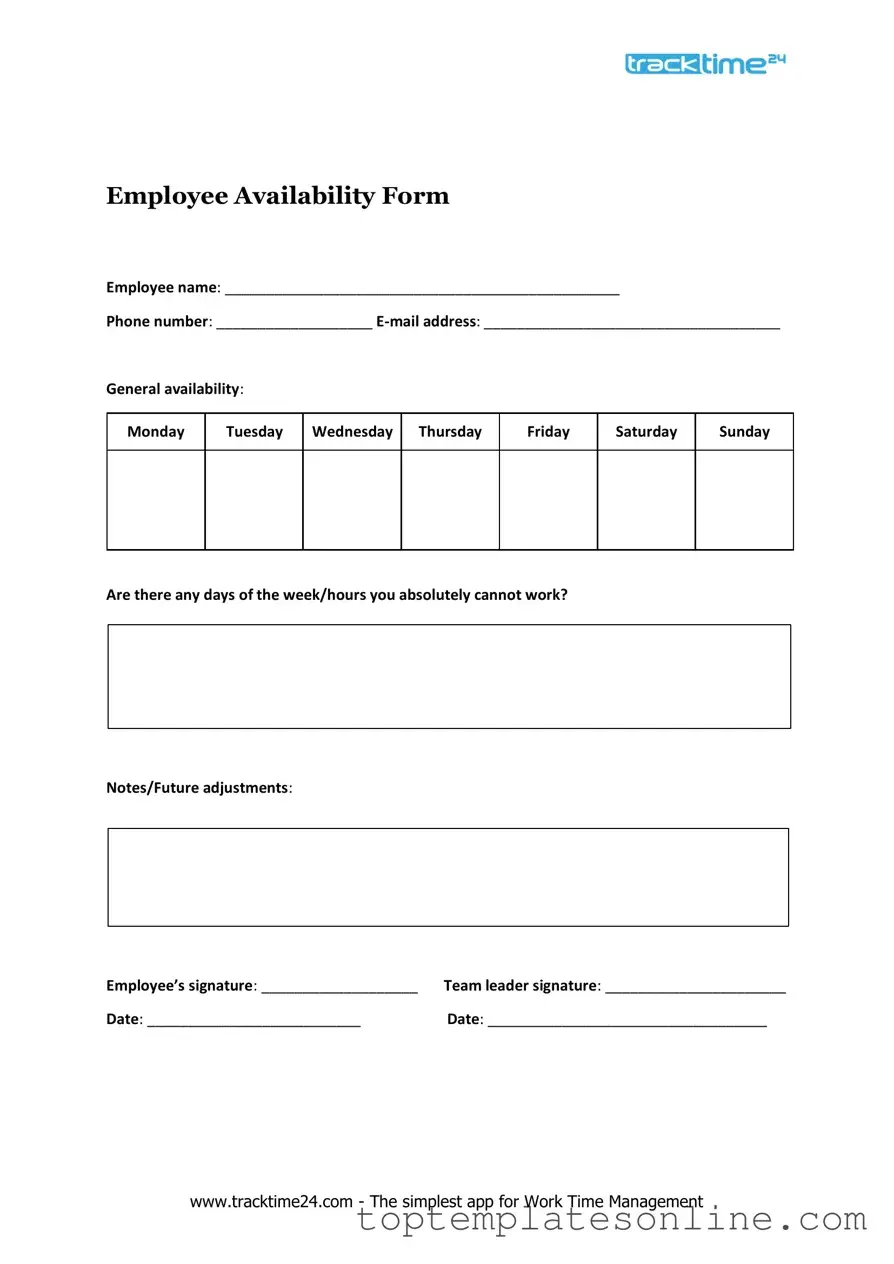The Employee Availability form serves as a critical tool for both employers and employees in managing work schedules effectively. This document allows employees to communicate their preferred working hours, days off, and any other scheduling constraints they may have. By providing this information, employees can ensure that their personal commitments are taken into account, which can enhance job satisfaction and productivity. Employers benefit from this form as well, as it aids in creating balanced work schedules that meet operational needs while accommodating the workforce's availability. This proactive approach can help minimize scheduling conflicts and reduce turnover rates. Additionally, the form can include sections for employees to indicate their availability for overtime or special projects, further facilitating efficient workforce management. Overall, the Employee Availability form is a vital component in fostering a collaborative work environment where both employee needs and organizational demands are aligned.
